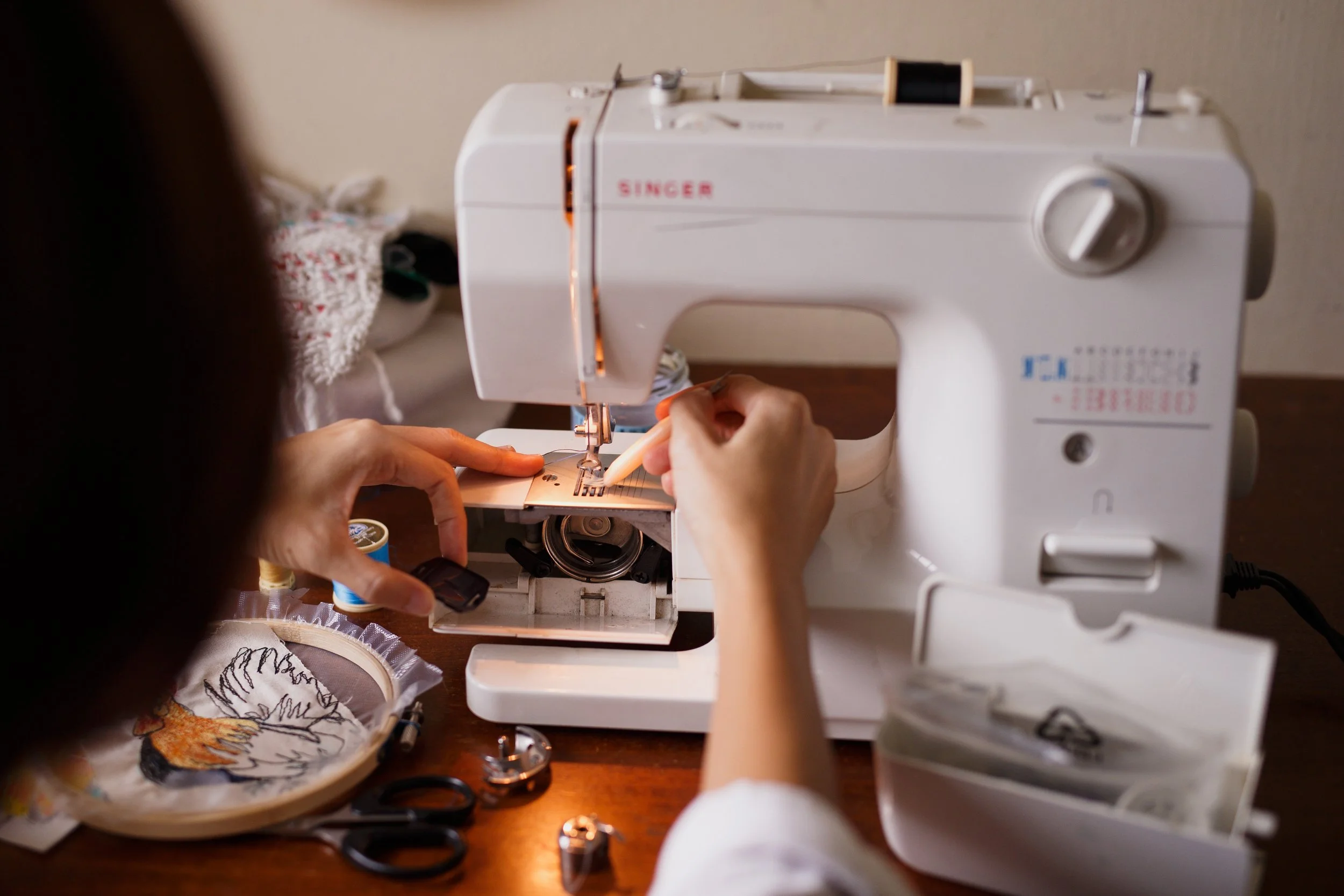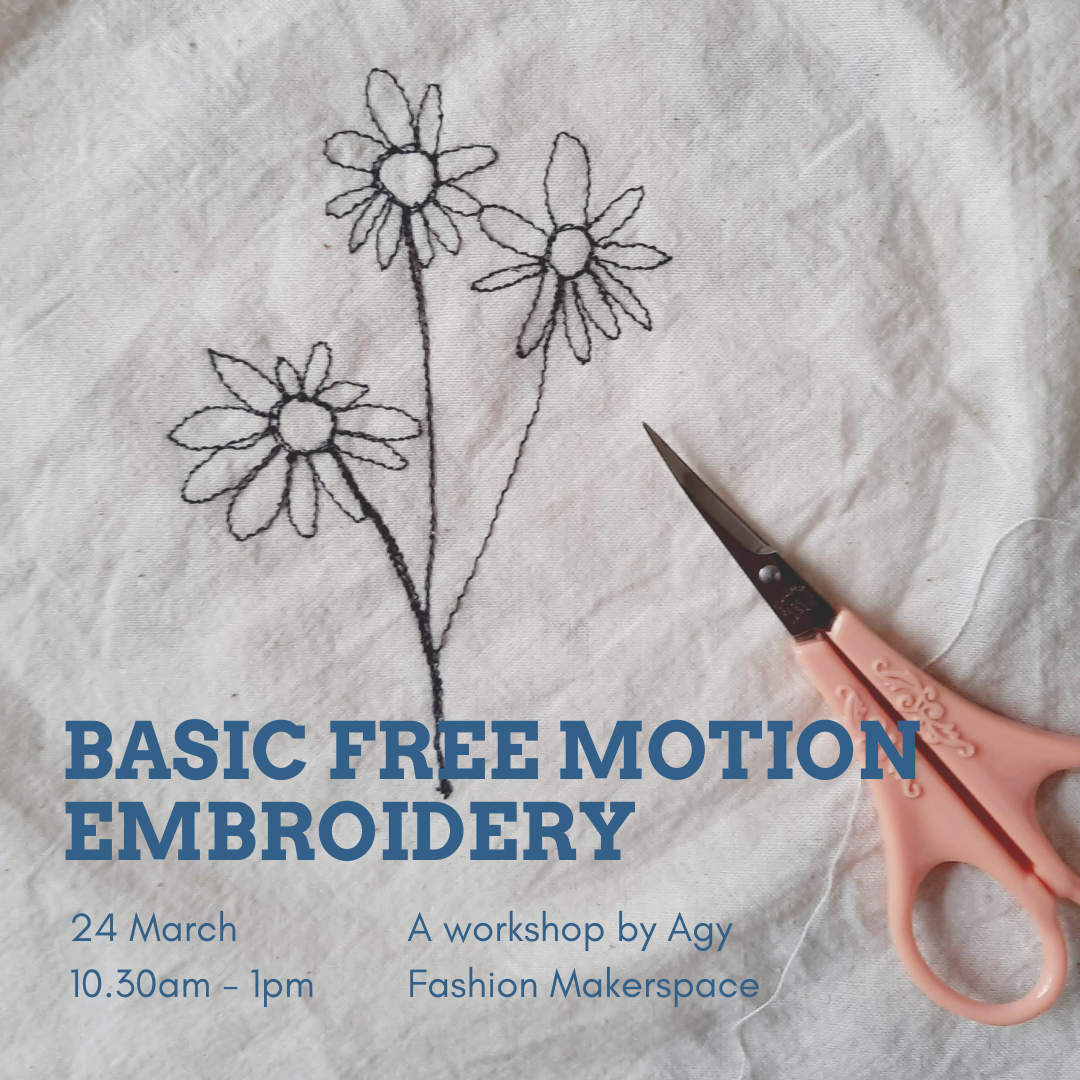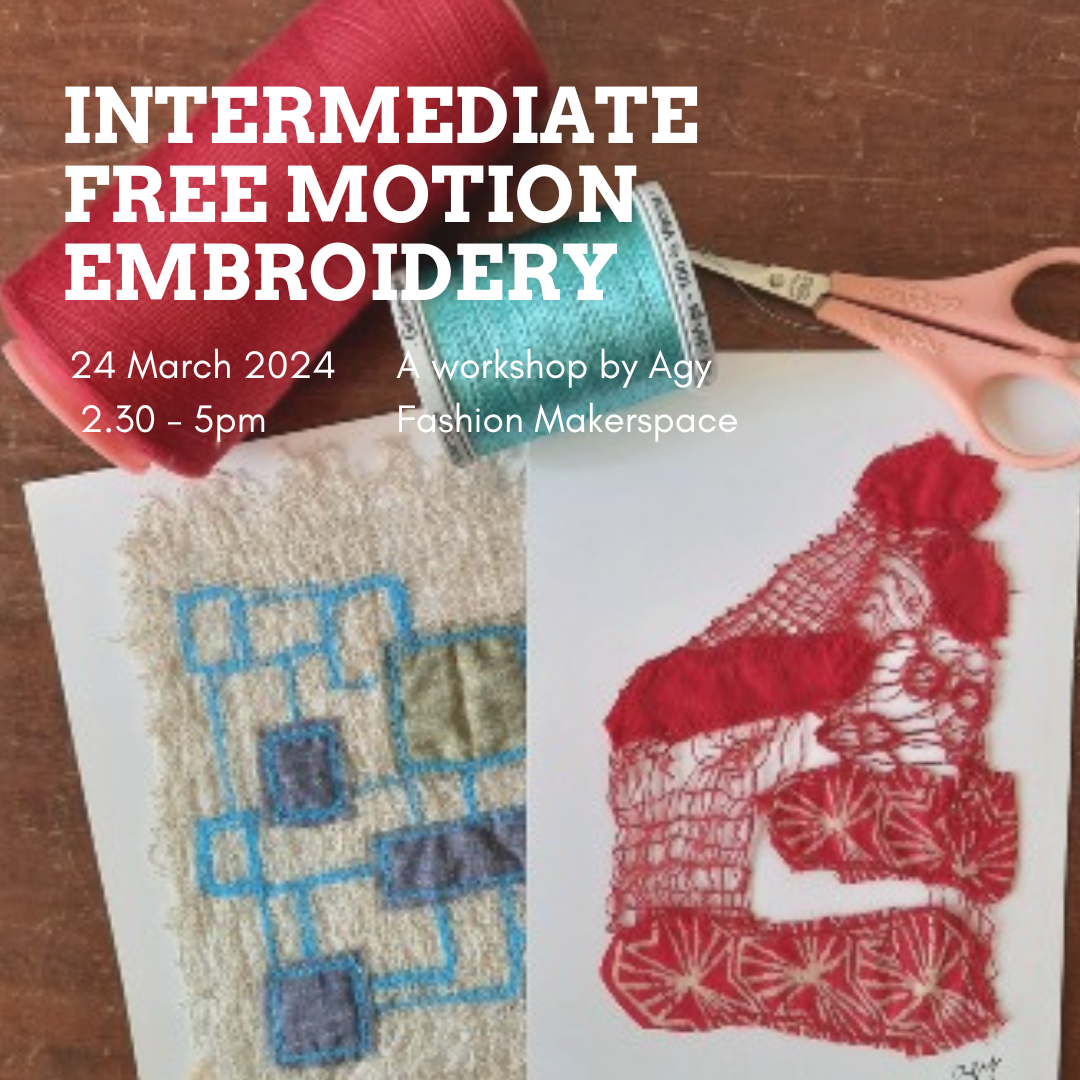Best Sewing Machine for Free Motion Embroidery
I get asked this question quite a lot during my free motion embroidery workshops and on social media.
My answer is, it really depends.
I have two machines which I use for all my works. My Singer 1100, which is now more than 15 years old, and still going strong. And my secondhand Bernina 1001 sewing machine, which I recently got at Ghim Soon. I am very happy with both of them, as they meet the requirements for my art work.
I do have one sewing machine on standby, which is the Singer 2259 which I got at the last minute when the foot pedal of my Singer 1100 refused to work. The only reason I got it was because the footer of the 2259 matched that of my 1100! I have the Singer 2259 for regular sewing (not free motion embroidery)
My Singer 1100
Can you use any sewing machine for free motion embroidery?
The answer is that it will depend on whether the sewing machine can be adjusted to do the following:
Lower or cover the feed dogs so that you stop the sewing machine from moving the fabric. You are in control and not the machine!
Remove the presser foot so that you can switch in a darning or free motion embroidery foot.
I like to add the following requirements / questions so that the sewing is enjoyable too:
Is it sturdy? Check the sewing machine is heavy enough that it doesn’t rattle or shift when free motion embroidery / sewing becomes very intense (a lot of stitches), or you are sewing collages that are very thick. If your sewing projects involve sewing through thick layers, then I would advise getting a heavy duty machine or even an industrial sewing machine. As I sew with organza and other light weight fabrics, I have not bought an industrial machine.
Always try out the sewing machines at the store, and their functions. Check whether it moves when you’re doing some sewing (refer to point 1).
Skip the electronics - I know it is nice to have electronics and all the fancy buttons, but this adds to the cost of the sewing machine. Think about whether you really need them for your work too. I have friends who rely on the software to create embroidery designs for commercial products; they are beautiful pieces, but at the moment these special functions don’t add value to my work. Also remember, electronic parts do go obsolete a lot quicker than mechanical parts (according to my friendly sewing machine repair man), and if you are living in a humid country (like Singapore), be aware that moisture can rust and corrode the parts easily.
Do you really need so many stitch functions? Another requirement to think about! I’m very happy with just a straight stitch and zig zag stitch. An added bonus is if I can adjust the zigzag stitch width too.
The sewing bed - sometimes, my projects can get on the big side, and it makes me wonder if I should have gotten a sewing machine with a larger bed for sewing on. My Bernina 1001 has a wider sewing bed than the Singer 1100, and it makes a world of difference! Ask yourself whether you are comfortable with a regular bed. Perhaps the new sewing machine has a detachable bed that allows you to switch in a larger one?
Size of the foot pedal - yes, I think this one is a bonus because before I got my Bernina, I sometimes would get cramps from holding my foot over the foot pedal. The Bernina 1001 foot pedal is a lot larger and allows my entire foot to rest on it.
Do I need a stitch regulator? A stitch regulator helps detect how fast the fabric is moving during sewing, and it in turn adjusts the speed of the needle so that the stitch length comes out even. I love to create all types of textures on the sewing machine so having the stitch regulator is a no for me. However, this may be a useful function to have if you are a quilter or someone who would like the stitches to be even in the artwork.
The Bernina foot pedal has made a huge positive impact on the way my foot sits on it.
Want to Learn More?
I am having in-person free motion embroidery workshops in Singapore on 24 March! Click on the images for more details!




